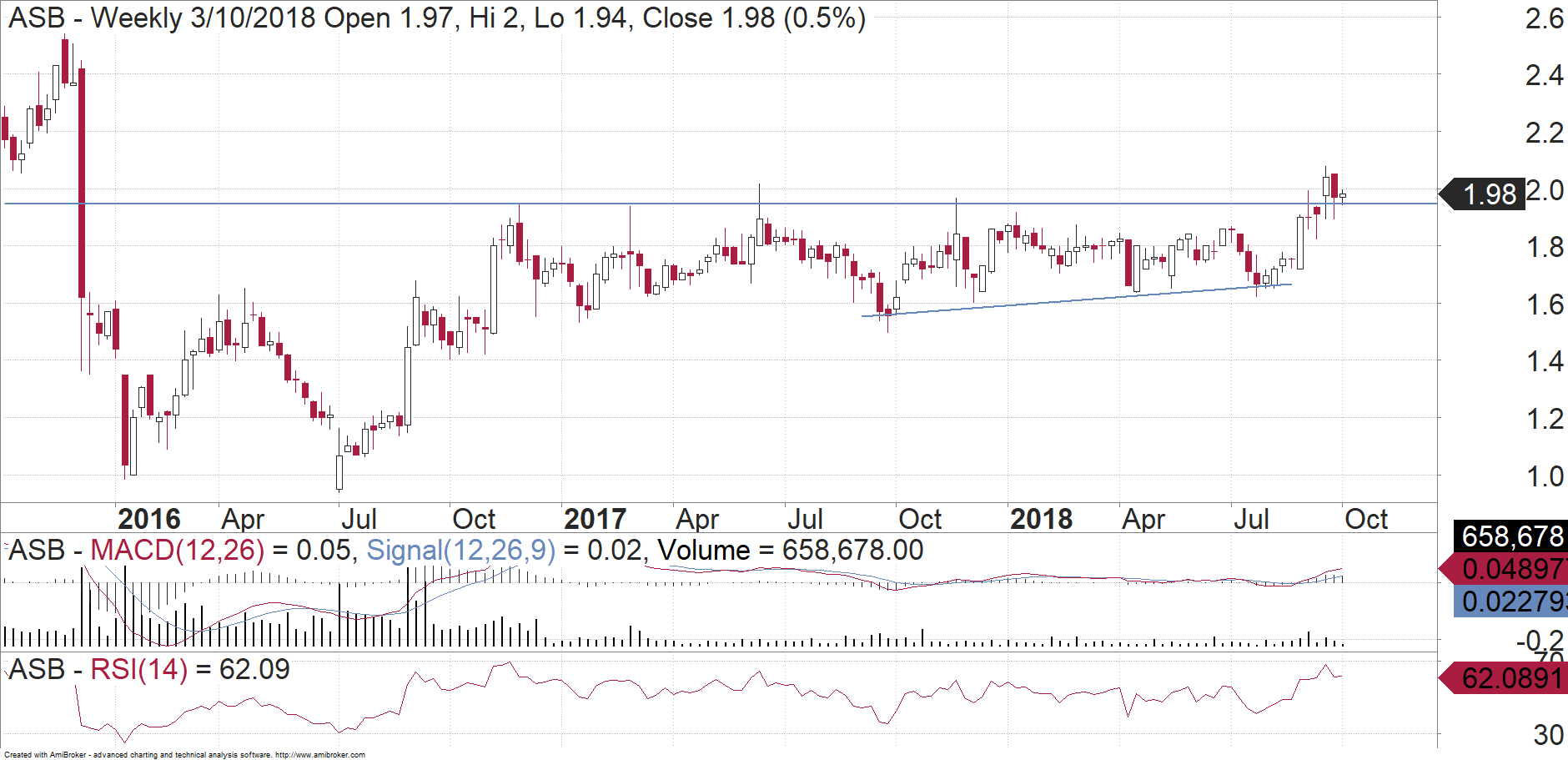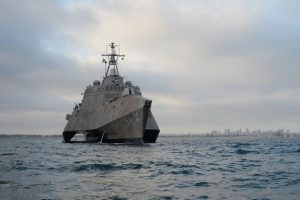We have long held a positive view on Austal (ASX:ASB). Its shares have recently started to move upwards after being range-bound for some time. In this note, we look at the key reasons as to why the shares may now be starting to come back into favour.
Overview of Austal
The main aspect of Austal’s business is the design and manufacture of defence and commercial vessels. These include the Littoral Combat Ship (LCS) for the US Navy and military high-speed vessels for transport and humanitarian relief, such as the Expeditionary Fast Transport (EFT) vessel. The LCS is a 127m, Frigate sized vessel built at the Company’s facility in Mobile, Alabama.
The LCS program was initially for 55 vessels. To date, 32 vessels have been awarded, of which 17 have been awarded to Austal and 15 to US-based Lockheed Martin (LMT). US Congress has already indicated that contracts for a further three LCS vessel will be awarded in 2019. The remaining 20 vessels are to be adjusted to a new guided-missile Frigate FFG(x) format.
Key Investment Considerations
US Shipbuilding Margins Trending Up
ASB targets an EBIT margin of 6-8% on its US shipbuilding activities. This includes both the LCS and EFT programs. The US shipbuilding margin is considered the key indicator of performance in the US, as revenue and earnings variations from year to year depend on factors such as the level of production activity. US shipbuilding activities account for over 80% of group revenue.
Market confidence in the stock took a hit in 2015. This was after the Company had incurred additional costs as a result of having to meet the shock rating standard under ASB’s contract with the US Navy. The contract stipulates that shock tests are required to test the effect on a ship from a local explosive blast.
Since that period, US shipbuilding margins have slowly recovered and more recently, have tracked above the top end of the 6-8% target range (8.5% in FY18). This validates our earlier view that the Company would have learnt its lesson from the 2015 experience. Further, the US Navy, in September of this year, awarded a contract to ASB for two more Littoral Combat Ships (ASB’s 16th and 17th vessels). The EBIT margin for these two contracts is likely to be above 8%. We therefore expect overall EBIT margin for US shipbuilding to remain above 8%.
Pipeline of Service & Maintenance Work Remains Strong
While the current EBIT contribution from the US operations is predominantly from the LCS and EFT programs, there is a smaller, but growing portion (~10-15%) generated from the service and maintenance work undertaken by ASB on vessels after completion. As the LCS program continues, the potential for additional service and maintenance work improves the EBIT margin profile over the medium-to-long term. This is as earnings from service and maintenance work provides a greater portion of annuity-style revenues. The margin is also typically higher than that for shipbuilding.
Leading Market Position in Commercial Vessels
After winning $380m worth of contracts in the six months to 31 December 2017, ASB now has a strong commercial vessel order book of over $440m. In context, this is a component of an overall order book of $3.0b. It is across 10 vessel programs in the US, Australia, Philippines, Vietnam and China.
Expanding Revenue in Other Regions
The Company has invested in upgrading the shipyard facility at Henderson (Perth, WA). It is also expanding the capacity at its Philippines shipyard (in Cebu).
As a result of the increased investment at the Philippines shipyard, revenue is expected to double in FY19 and FY20, compared to the recent average. This expansion in revenue is important in the sense that it would lead to the Philippines shipyard returning to an EBIT positive position during this time, with the recent performance of the Philippines shipyard impacted by low throughput as well as throughput constraints as a result of infrastructure and expansion plans in development. This has resulted in a period of EBIT losses/small EBIT gains for the Asia segment since FY16. The Company expects the Asian segment to be profitable in FY19. It is underpinned by the expansion in revenue at the Philippines shipyard and reduced start-up costs for a recently-commenced small commercial shipyard operation in Vietnam.
In addition, the Australia segment is expected to reach profitability in FY19. This is as a result of increased throughput across the Pacific Patrol Boat and commercial programs. The Australia segment reported an EBIT loss in FY18. This was due to the impact from costs associated with the Australia Offshore Patrol Vessel tender. It was also affected by the onerous Cape-Class Patrol Boat contract, and the absence of profit recognition on the 1st Pacific Patrol Boat vessel.
Technical Analysis of Austal
The share price had been range bound for the last year and a half, with selling occurring anywhere near $2. Since September last year, the stock had made a few “higher lows”. This was an early indication of some positive buying support. Price action earlier this month was particularly bullish with the share breaking above its long-term resistance line. With the stock now holding on to those levels, it is quite possible that we see it go on to retest the old high near $2.50. This is due of the fact that it had spent a long time going sideways – the longer a stock consolidates, the more powerful the breakout is when it occurs.

Current share prices available here.
You can learn more about technical analysis in this article.
Michael Gable is managing director of Fairmont Equities.
Sign up to our newsletter. It comes out every week and its free!
Would you like us to call you when we have a great idea? Check out our services.
Disclaimer: The information in this article is general advice only. Read our full disclaimer HERE.
Like this article? Share it now on Facebook and Twitter!

